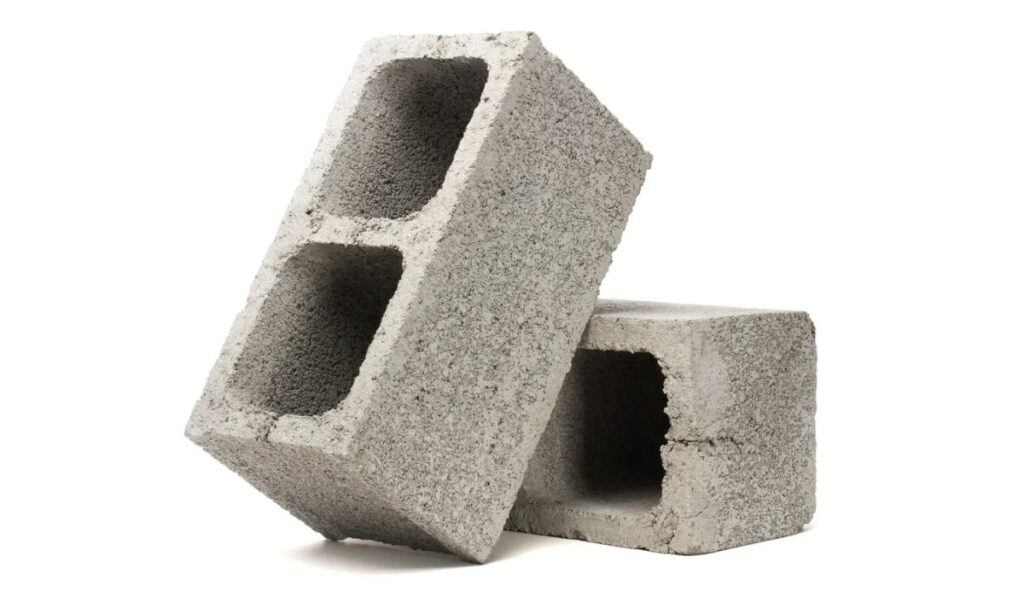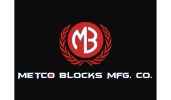Hollow Concrete Block

Usually, hollow concrete blocks are used in masonry construction. It expedites building, uses less cement and steel, and lowers labor expenses on the project site. These blocks enhance physical wall characteristics like noise and heat insulation while also reducing the natural weight of masonry constructions. There are two sizes of typical hollow concrete blocks: full size and half size. Full-sized blocks are rectangular with two cores, whereas half-sized blocks are cubical with one core.
Physical Properties of the Hollow Concrete Blocks
Moisture Movement: Not more than 0.09 %
Water Absorption: Not more than 10 %
Drying Shrinkage: Not more than 0.06 %
Compressive Strength
For Grade A: 3.5 to 15 N/mm2For
Grade B: 3.5 to 5 N/mm2
Density
For Grade A: 1500 kg/m3
For Grade B: 1100kg/m3 to 1500 kg/m3
Where are the hollow concrete blocks used?
Load-bearing walls inside and outside, curtain walls, fireproofing, partition walls and panel walls, backing made of brick, stone, and other faces, piers, columns, retaining walls, boundary fences, etc.
What are the advantages of Hollow Concrete Block Masonry?
- Comparatively speaking, hollow concrete block masonry is a simple and quick method of building.
- Hollow concrete blocks have a huge size, which means there are fewer joints, which lowers the cost of building.
- Hollow concrete blocks are durable and have low maintenance
- Semi-skilled or unskilled labor can work with this masonry practice
- Due to the lack of extra formwork or construction equipment, hollow block masonry can be reinforced.
- When hollow concrete block masonry is compacted under intense pressure and vibration, it is extremely durable.
- Since they are hollow, the hollow concrete blocks lighten the structure and require less R.C.C. steel overall.
- These blocks have a rough texture which provides excellent bonding between cement mortar and concrete blocks
- To achieve earthquake resistance, the spaces and cores can be filled with steel bars and concrete.
- Excellent sound, heat, and moisture insulation is provided by these hollow concrete blocks.
- The blocks have excellent fire resistance
What are the disadvantages of Hollow Concrete blocks?
- Hollow Concrete blocks are more expensive than regular bricks.
- An earthquake could cause damage to a construction made of hollow blocks without any interior support.
What are the different types of Hollow Concrete Blocks?
- Concrete Stretcher Blocks:-These hollow blocks are widely used in construction. The blocks are used to join the corner of masonry units. These blocks are placed with their length parallel to the face of the wall.
- Lintel Blocks:-The channeled blocks or beam blocks are the name given to the lintel blocks. This concrete masonry unit is formed like a U. The length of the block is a deep groove in the blocks. After the blocks were put in place, the concrete’s reinforcing groove was filled. These blocks are used to transfer the load coming from the top of the part of doors and windows.
- Partition Concrete Blocks:-The construction of partition walls is perfect for these blocks. The blocks’ hollow interior is separated into two or three parts. The partition block’s height is greater than its width.
- Concrete Corner Blocks:-These blocks are placed in masonry corners at the bottom of windows or door openings. The block has a stretcher design on one corner and a plain corner in the other. The blocks are set up so that one end is secured with a stretcher block and the plane end is on the outside.
- Concrete Pillar Blocks:-These blocks are also known as double corner blocks as both of its corners are plain. The blocks used when two ends of the corner are visible. As of its name, it is widely used in pillars or piers
- Jamb Concrete Blocks:-This block is used when the elaborated window opens in the wall. It is connected to the stretcher and corner of the block. These blocks provide space for the casing member of the window.
- Bullnose Concrete Blocks:-In terms of structure and use, these bullnose concrete blocks are comparable to corner blocks. These blocks are utilized when the edges need to be round.
- Frogged Brick Blocks:-These frogged brick blocks have a frog on top with a header and stretcher, just like the frogged brick. This frog assists the blocks in holding mortar and forming a solid bond with the block that is placed on top.
As a result, concrete blocks are a more effective building material than traditional bricks. The blocks reduce construction expenses while accelerating construction. The cost of hollow blocks is low, and they come in a variety of sizes and shapes.
Brand Associated



